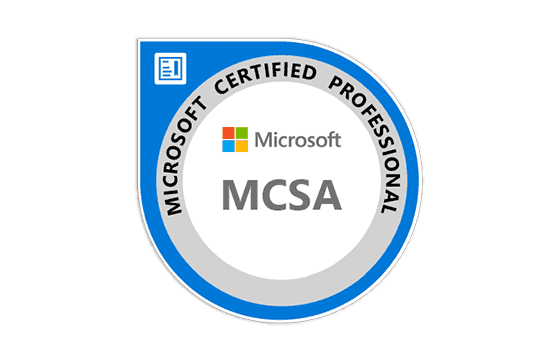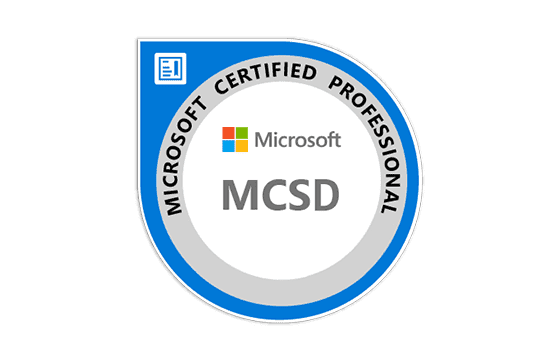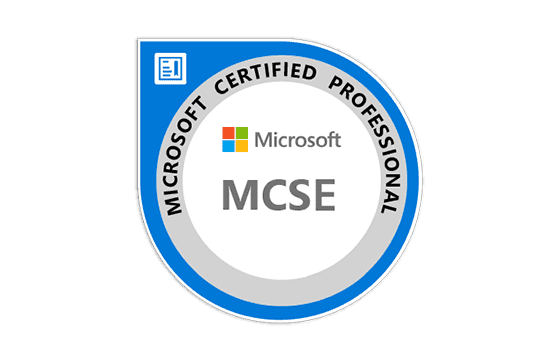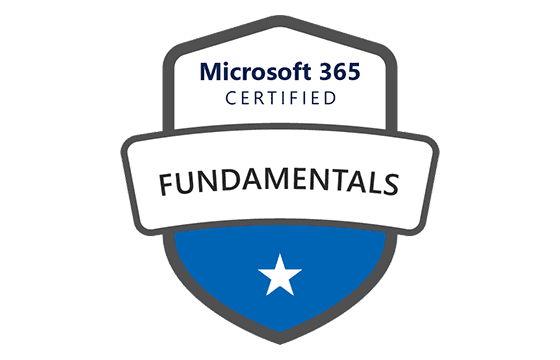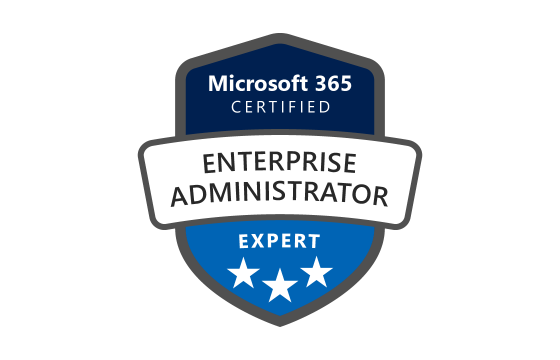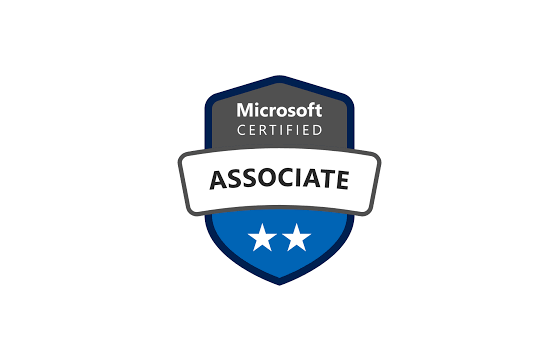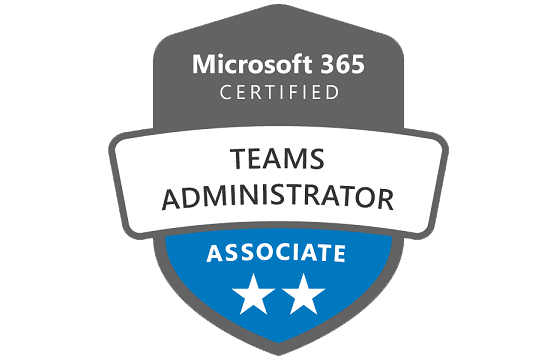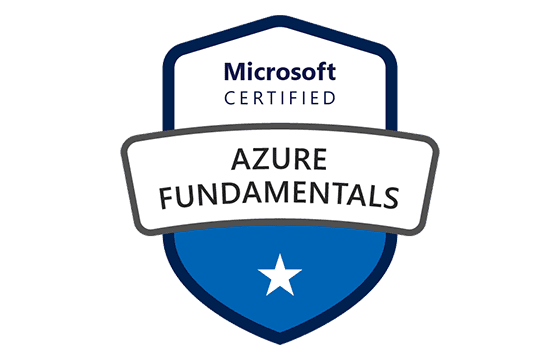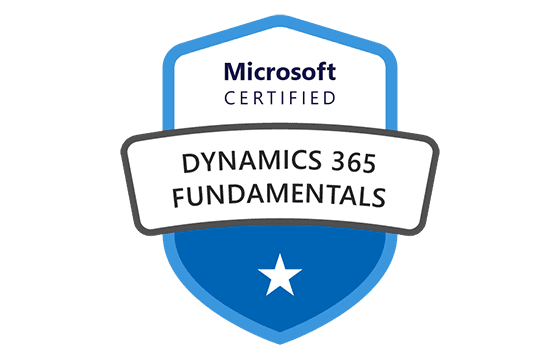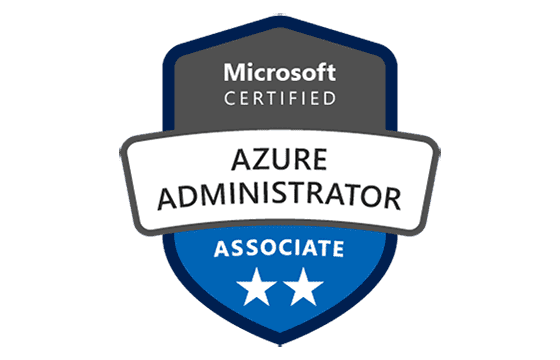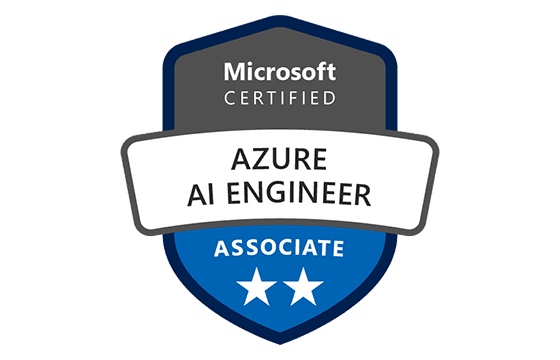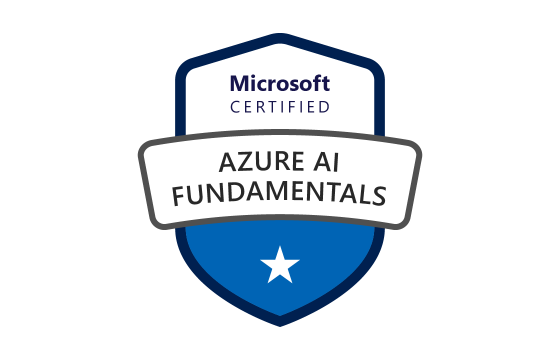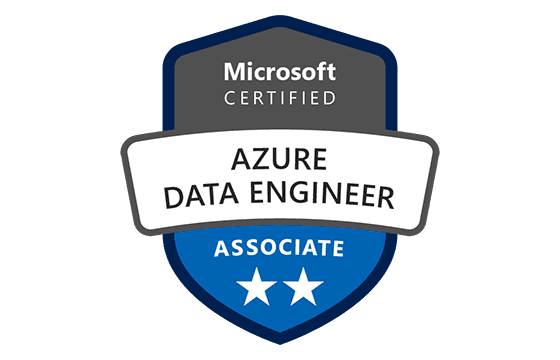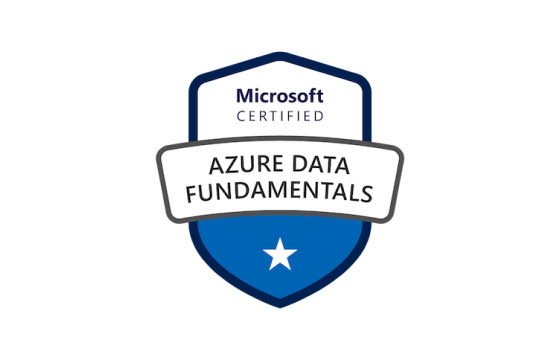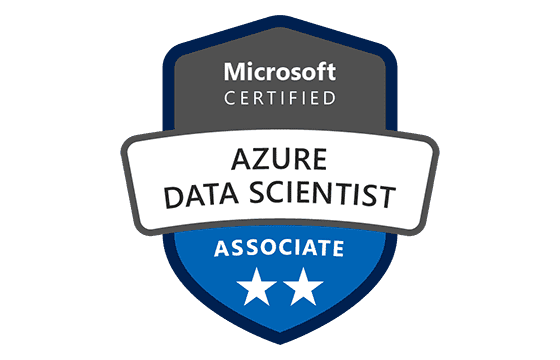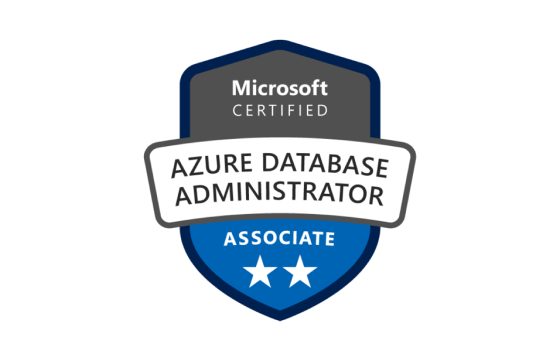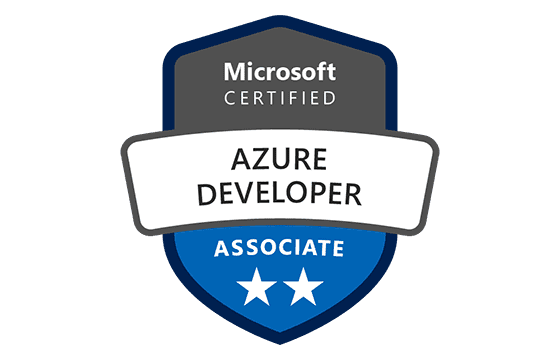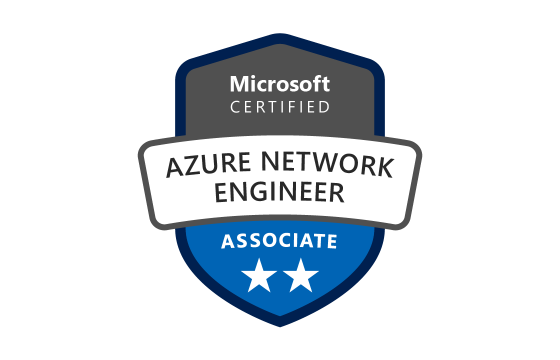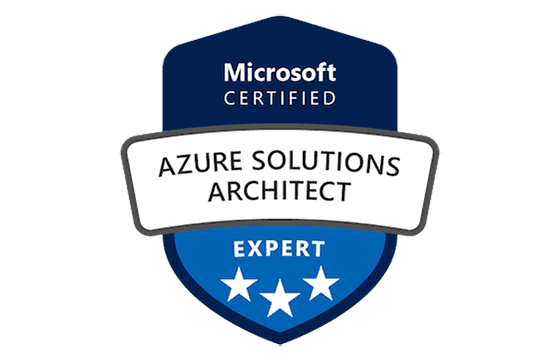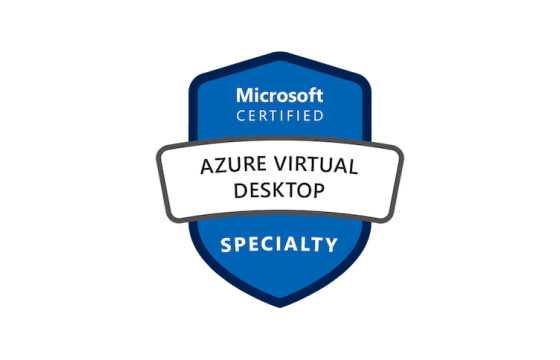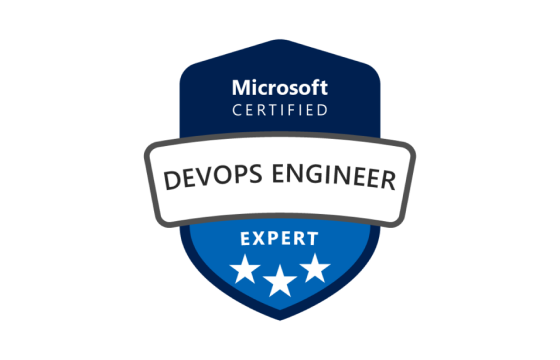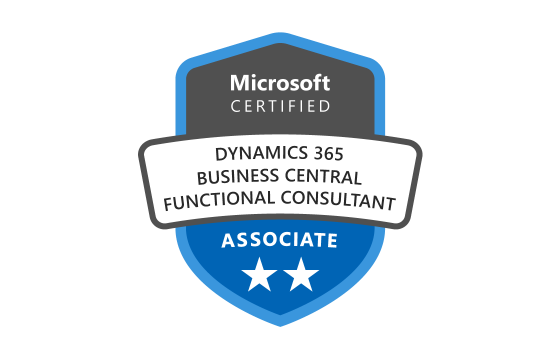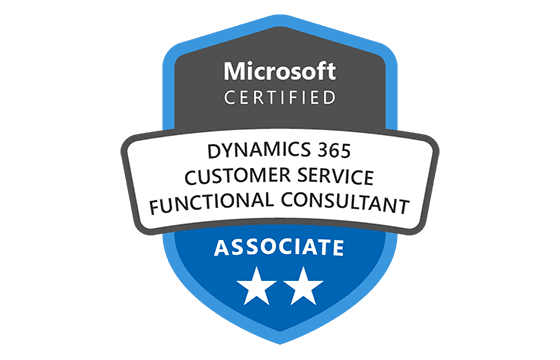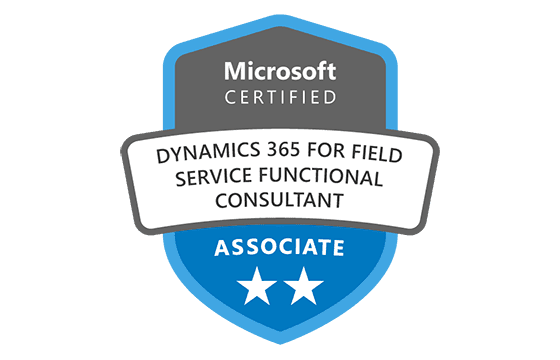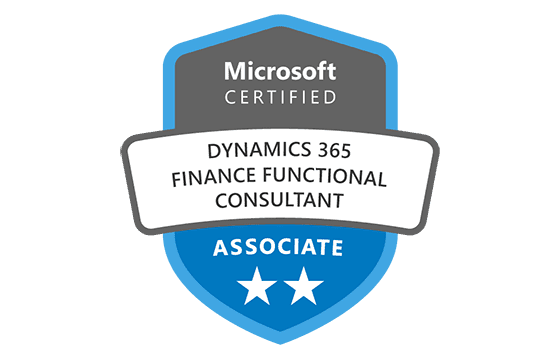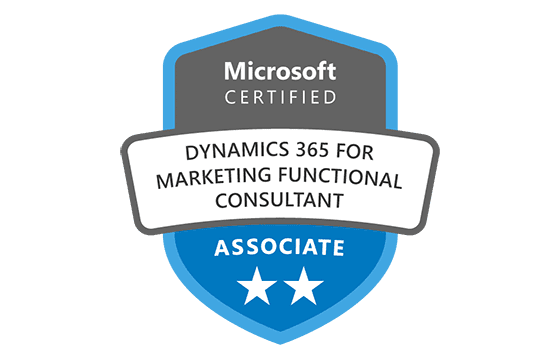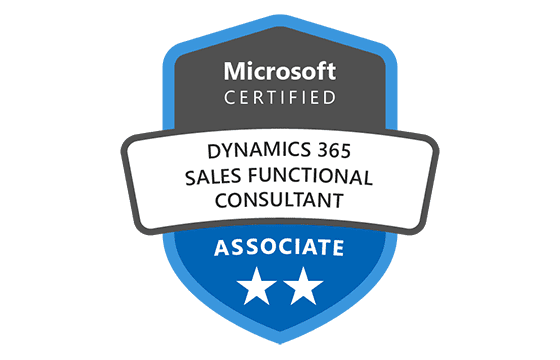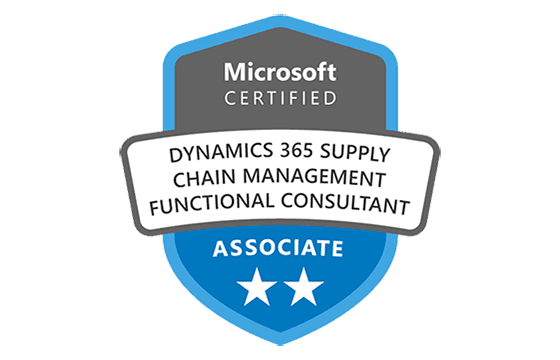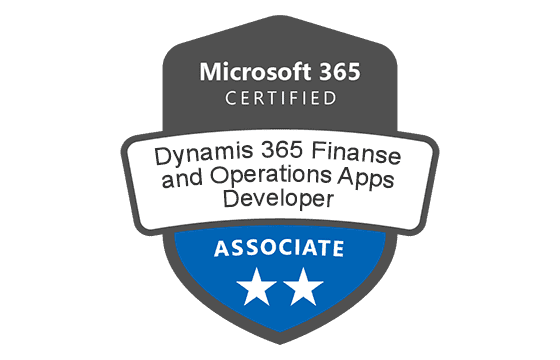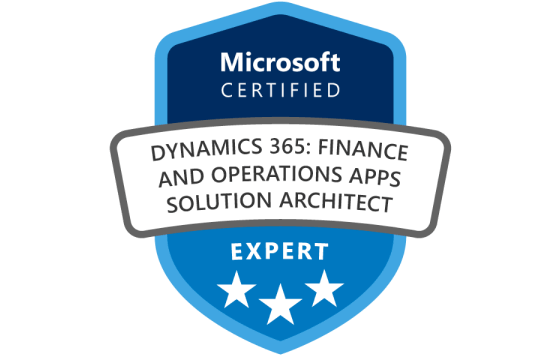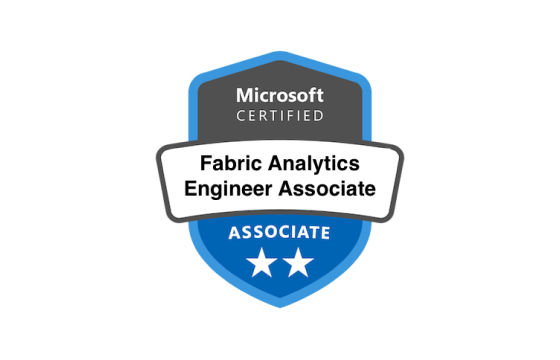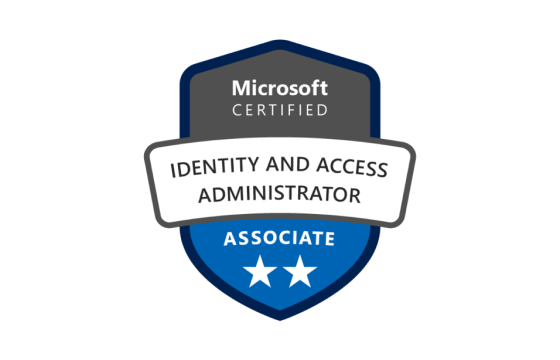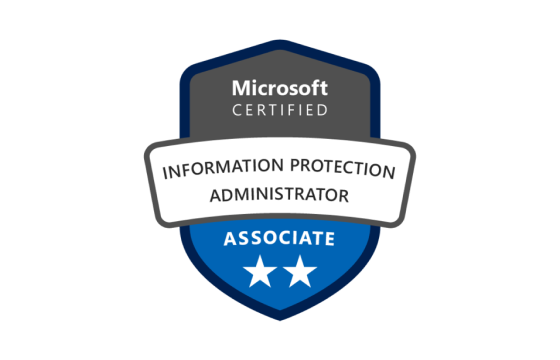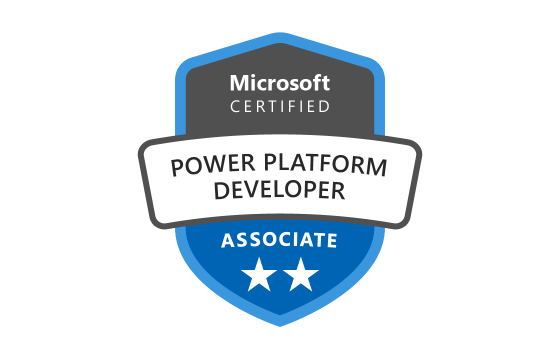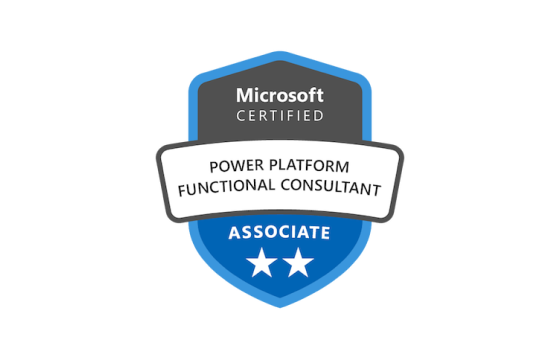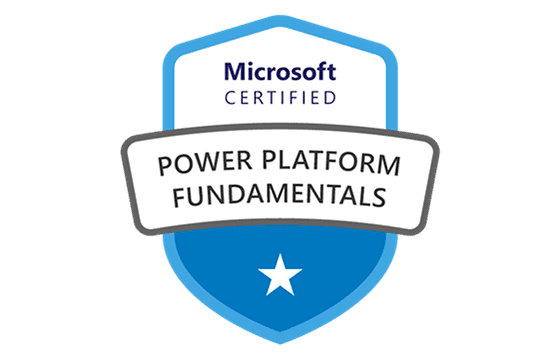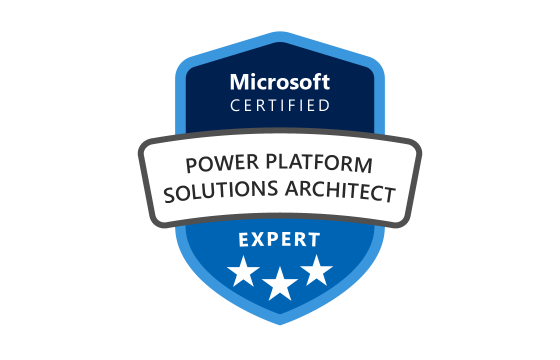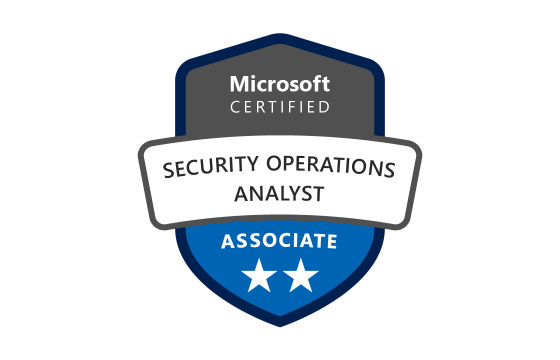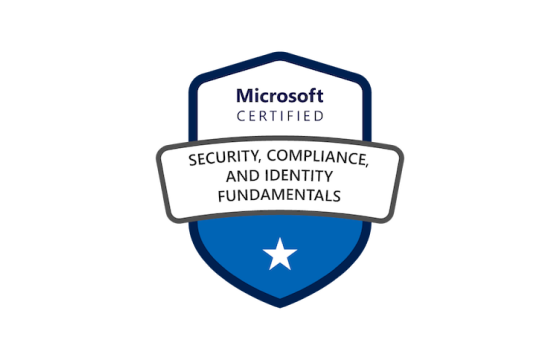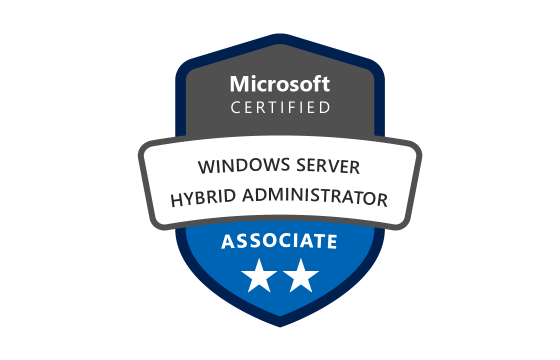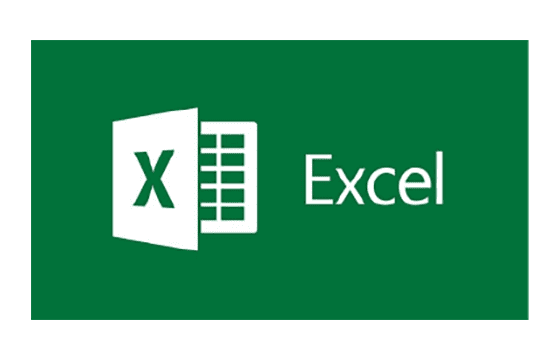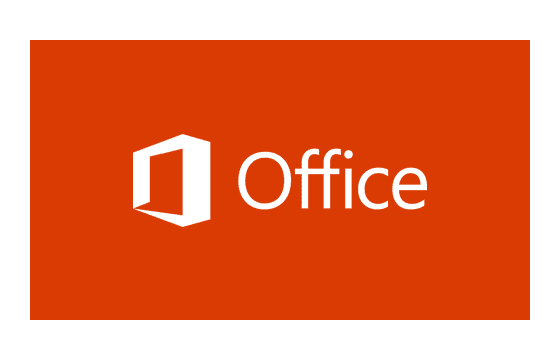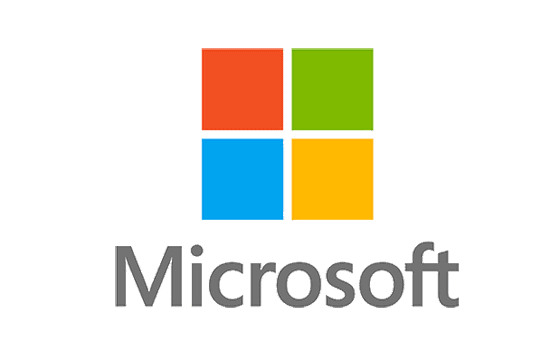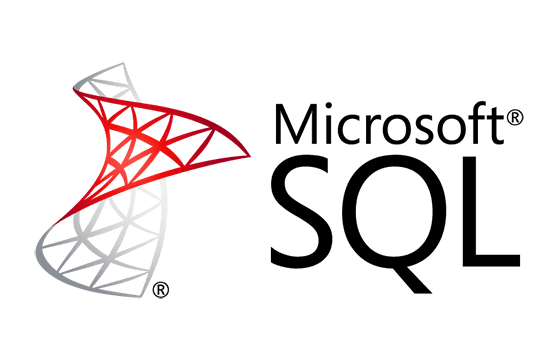Pass Your Microsoft Certified: Power Platform Fundamentals Certification Easy!
Microsoft Certified: Power Platform Fundamentals Certification Exams Questions & Answers, Accurate & Verified By IT Experts
Instant Download, Free Fast Updates, 99.6% Pass Rate.

$69.99
Microsoft Certified: Power Platform Fundamentals Certification Exams Screenshots
Download Free Microsoft Certified: Power Platform Fundamentals Practice Test Questions VCE Files
| Exam | Title | Files |
|---|---|---|
Exam PL-900 |
Title Microsoft Power Platform Fundamentals |
Files 10 |
Microsoft Certified: Power Platform Fundamentals Certification Exam Dumps & Practice Test Questions
Prepare with top-notch Microsoft Certified: Power Platform Fundamentals certification practice test questions and answers, vce exam dumps, study guide, video training course from ExamCollection. All Microsoft Certified: Power Platform Fundamentals certification exam dumps & practice test questions and answers are uploaded by users who have passed the exam themselves and formatted them into vce file format.
Mastering Microsoft Power Platform Fundamentals: From Practical Applications to Career Growth
In the modern business environment, organizations are increasingly reliant on technology to streamline operations, drive productivity, and make data-driven decisions. Microsoft Power Platform has emerged as a powerful suite of tools designed to help businesses and professionals accomplish these goals without requiring extensive coding expertise. Understanding the fundamentals of this platform is essential for anyone looking to leverage digital transformation in their organization.
Microsoft Power Platform comprises four main components: Power Apps, Power Automate, Power BI, and Power Virtual Agents. Each component serves a unique purpose but integrates seamlessly to provide a comprehensive low-code solution for building applications, automating workflows, analyzing data, and creating intelligent chatbots. Mastering these tools allows users to optimize business processes, reduce manual work, and generate insights that inform strategic decisions.
The Power Platform Fundamentals certification is aimed at professionals who are new to the platform or those who want to understand its business value. This certification validates foundational knowledge and demonstrates the ability to connect different components of the platform to solve practical business problems. It is an excellent starting point for career growth in roles that involve digital transformation, business analysis, or IT solutions.
Overview of Power Platform Components
Understanding the four core components of Microsoft Power Platform is critical for grasping the platform's capabilities and potential applications in the business world.
Power Apps
Power Apps enables users to create custom applications tailored to specific business needs without traditional coding. Users can build apps for web and mobile platforms using drag-and-drop functionality and prebuilt templates. Power Apps provides two main types of applications: canvas apps and model-driven apps. Canvas apps offer flexibility in designing user interfaces, while model-driven apps are more data-centric and rely on underlying data models from Microsoft Dataverse.
With Power Apps, organizations can automate manual processes, improve data entry, and provide employees with tools that enhance productivity. For instance, a field service team can use a Power App to log service requests, track inventory, and update customer records in real time. This eliminates paper-based processes and reduces errors, leading to faster response times and improved customer satisfaction.
Power Automate
Power Automate is a tool designed to automate repetitive workflows across applications and services. It enables users to create automated processes, known as flows, that connect different systems and trigger actions based on specific conditions. Power Automate supports a wide range of connectors, allowing integration with Microsoft products like Office 365, SharePoint, and Dynamics 365, as well as third-party applications.
Automation can save organizations significant time and resources by reducing manual effort. Examples include automatically sending approval requests, generating notifications when certain data changes, or consolidating data from multiple sources. By implementing these automated workflows, businesses can focus on higher-value tasks and improve operational efficiency.
Power BI
Power BI is a business analytics tool that allows organizations to visualize and analyze data to gain actionable insights. Users can create interactive dashboards, reports, and data visualizations to monitor performance, identify trends, and make informed decisions. Power BI supports integration with multiple data sources, including Excel, SQL databases, cloud services, and more.
The platform enables both technical and non-technical users to explore data intuitively. For example, a sales manager can track performance metrics, analyze customer behavior, and forecast sales using dynamic dashboards. The insights generated through Power BI help organizations make strategic decisions, optimize operations, and drive business growth.
Power Virtual Agents
Power Virtual Agents allows users to create AI-driven chatbots without writing code. These chatbots can handle customer inquiries, provide support, and automate routine interactions. Power Virtual Agents integrates seamlessly with other Power Platform components and external systems, enabling businesses to deliver consistent and efficient customer experiences.
Organizations can deploy chatbots across websites, Microsoft Teams, or social media platforms. For instance, a customer support team can use a chatbot to answer frequently asked questions, route complex issues to human agents, and reduce response times. By automating these interactions, businesses can improve service quality while freeing up staff for more critical tasks.
Importance of Power Platform Fundamentals Certification
Earning the Power Platform Fundamentals certification provides several benefits for professionals and organizations. It serves as validation of foundational knowledge and demonstrates the ability to apply platform capabilities to real-world scenarios. This certification is particularly valuable for individuals who want to leverage low-code tools to optimize business processes or advance their careers in digital transformation roles.
Career Growth Opportunities
Low-code and no-code platforms are in high demand as organizations look for efficient ways to develop business solutions. Professionals with a certified understanding of Microsoft Power Platform are well-positioned for roles such as business analyst, process automation specialist, or digital transformation consultant. The certification signals to employers that the individual can deliver practical solutions that improve productivity and operational efficiency.
Business Value
Beyond career advancement, understanding Power Platform fundamentals helps professionals identify areas where automation and data insights can create measurable business value. Organizations benefit from employees who can streamline workflows, improve data management, and generate actionable insights, leading to cost savings, faster decision-making, and increased competitiveness.
Digital Transformation Enablement
Organizations today are focused on digital transformation, which requires leveraging technology to optimize processes and enhance customer experiences. Professionals certified in Power Platform Fundamentals can contribute to these initiatives by building solutions that integrate multiple systems, automate processes, and provide insights for strategic planning. This makes the certification a valuable asset for both individuals and organizations seeking to stay ahead in a digital-first world.
Key Skills Measured by the Certification
The Power Platform Fundamentals certification evaluates knowledge and skills across several areas, ensuring that certified professionals can effectively leverage the platform. Key skills measured include:
Understanding the core capabilities of Power Platform and its components.
Identifying how the platform can improve business processes.
Building simple applications using Power Apps.
Creating automated workflows with Power Automate.
Analyzing data and creating visualizations with Power BI.
Developing basic chatbots with Power Virtual Agents.
These skills emphasize practical application and business value rather than deep technical expertise, making the certification accessible to a wide range of professionals.
Exam Overview and Structure
The certification exam, known as PL-900: Microsoft Power Platform Fundamentals, assesses foundational knowledge of the platform. The exam typically includes multiple-choice questions, scenario-based questions, and case studies that test practical understanding of Power Platform capabilities.
Exam topics are distributed across the following areas:
Core capabilities of the platform
Business value of Power Platform solutions
Fundamentals of Power Apps, Power Automate, Power BI, and Power Virtual Agents
Preparation for the exam involves understanding each component, exploring practical applications, and reviewing Microsoft documentation and learning resources. Candidates should focus on how the platform can be used to solve business challenges and deliver measurable value.
Benefits of Learning Power Platform
Beyond certification, learning Microsoft Power Platform offers numerous benefits for professionals and organizations. The platform empowers users to:
Automate manual processes and reduce operational inefficiencies
Create custom applications tailored to business needs
Analyze data and generate actionable insights for decision-making
Develop chatbots that enhance customer and employee engagement
Integrate various systems and tools to streamline workflows
By mastering these capabilities, professionals become more versatile and valuable in the workplace, while organizations benefit from faster, data-driven decision-making and improved productivity.
Practical Applications in Business
Power Platform is widely used across industries to solve common business challenges. Some practical applications include:
Sales and marketing: Automating lead tracking, analyzing customer data, and generating reports.
Human resources: Managing employee onboarding, leave requests, and performance tracking.
Customer service: Implementing chatbots to answer FAQs and streamline support processes.
Finance and operations: Automating invoice approvals, expense tracking, and workflow management.
These applications demonstrate how the platform can address real-world problems and improve efficiency across various functions.
Learning Path and Resources
Microsoft provides extensive resources to help learners prepare for the Power Platform Fundamentals certification. These include:
Microsoft Learn modules with step-by-step guidance
Official documentation and tutorials
Community forums for sharing knowledge and best practices
Hands-on labs to practice building apps, workflows, and dashboards
By leveraging these resources, learners can develop a strong understanding of the platform and gain confidence in applying their skills in practical scenarios.
Microsoft Power Platform Fundamentals is more than just a certification; it is an entry point into a world of low-code innovation that empowers professionals to optimize business processes, automate workflows, and generate actionable insights. Understanding the platform’s components, earning the certification, and applying these skills in real-world scenarios can open doors to career growth and contribute to organizational success.
The Power Platform Fundamentals certification equips professionals with the knowledge and confidence to harness the capabilities of Power Apps, Power Automate, Power BI, and Power Virtual Agents. By integrating these tools, organizations can improve productivity, enhance decision-making, and drive digital transformation initiatives. For professionals, it provides a solid foundation to build advanced skills and explore specialized certifications in the Power Platform ecosystem
Exploring Practical Applications of Microsoft Power Platform
Microsoft Power Platform is not just a set of tools; it is a gateway to solving real-world business problems efficiently. While understanding the fundamentals is essential, the real power lies in applying these tools to improve processes, automate workflows, and generate actionable insights. Professionals who can leverage Power Platform to address organizational challenges are highly valued, as they drive productivity, innovation, and measurable business value.
The platform’s four main components—Power Apps, Power Automate, Power BI, and Power Virtual Agents—allow businesses to create custom solutions tailored to their unique needs. By connecting these components and integrating them with existing systems, organizations can transform operations, enhance decision-making, and streamline communication. Understanding how to apply each component in practical scenarios is key to maximizing the value of Power Platform.
Power Apps in Action
Power Apps allows users to build custom applications without traditional coding. Its low-code approach enables professionals to create solutions quickly, improving efficiency and reducing dependency on IT departments. The platform supports both canvas apps, which offer complete control over design, and model-driven apps, which focus on data models and business logic.
Use Cases for Power Apps
Employee onboarding: Streamlining the process of new hires completing forms, accessing resources, and completing training modules.
Inventory management: Tracking stock levels, recording transactions, and generating alerts when items are low.
Field service operations: Allowing employees to log service requests, access customer information, and update records in real time.
Internal approvals: Digitizing approval requests for expenses, leave, or travel to reduce manual paperwork and delays.
The beauty of Power Apps lies in its ability to connect with other Microsoft tools and third-party services, making it versatile for almost any department or business function.
Benefits of Using Power Apps
By implementing Power Apps, organizations gain several advantages:
Reduced manual effort and paperwork
Faster response times and process completion
Increased data accuracy and consistency
Empowerment of non-technical users to develop solutions
These benefits translate to cost savings, improved employee satisfaction, and a more agile organization capable of responding to changing business needs.
Power Automate: Streamlining Workflows
Power Automate is designed to automate repetitive tasks and integrate disparate systems. It allows users to create flows—automated sequences of actions triggered by events, conditions, or schedules. By automating mundane tasks, professionals can focus on higher-value activities that require human judgment and creativity.
Practical Scenarios for Power Automate
Approval workflows: Automatically routing requests for review, sending notifications, and updating records when approved or rejected.
Data collection and integration: Gathering information from emails, forms, or databases and consolidating it in a single location.
Notifications and alerts: Sending alerts when specific conditions are met, such as low inventory levels or missed deadlines.
Task automation: Scheduling repetitive tasks, such as generating reports or sending reminders, to reduce manual intervention.
Impact on Business Operations
The use of Power Automate enhances productivity by reducing errors, speeding up processes, and improving communication. For example, a finance department can automate invoice approvals, ensuring timely processing while minimizing manual data entry. Similarly, HR teams can automate leave request approvals, providing employees with instant responses and managers with visibility into pending requests.
Power BI: Turning Data into Insights
Power BI is a business intelligence tool that enables professionals to analyze data, create visualizations, and generate insights that inform decision-making. The platform supports integration with multiple data sources, allowing organizations to consolidate information and monitor key performance indicators in real time.
Key Applications of Power BI
Sales analysis: Tracking revenue trends, monitoring sales team performance, and identifying opportunities for growth.
Customer behavior analysis: Understanding purchasing patterns, service interactions, and preferences to enhance customer experiences.
Operational performance: Monitoring production efficiency, supply chain metrics, and resource utilization to optimize operations.
Financial reporting: Creating dashboards to visualize expenses, budgets, and forecasts for more informed financial planning.
Advantages of Power BI
Power BI empowers organizations to make data-driven decisions by providing clear, interactive visualizations. Dashboards and reports can be shared across teams, promoting collaboration and transparency. Additionally, advanced features such as natural language queries and AI-driven insights make it easier for users to uncover trends and patterns in complex datasets.
Power Virtual Agents: Enhancing Communication and Support
Power Virtual Agents enables users to create AI-driven chatbots that handle customer inquiries, internal support requests, and routine interactions. Chatbots can operate 24/7, providing instant responses while reducing the workload on human employees.
Practical Applications for Chatbots
Customer service: Answering frequently asked questions, providing product information, and routing complex issues to human agents.
Employee support: Assisting with IT requests, HR inquiries, or policy information within an organization.
Sales assistance: Guiding customers through product selection, promotions, or order status inquiries.
Event management: Handling registrations, scheduling notifications, and answering common questions.
Benefits of Chatbots
Implementing chatbots improves response times, enhances user experience, and allows staff to focus on more strategic activities. Additionally, chatbots can provide valuable insights into common issues and customer behavior, informing future improvements in products and services.
Integrating Power Platform Components
One of the most powerful aspects of Microsoft Power Platform is the ability to integrate its components to create comprehensive solutions. For example, a company could use Power Apps to collect customer feedback, Power Automate to route feedback to relevant teams, Power BI to analyze trends and visualize results, and Power Virtual Agents to answer customer queries automatically. This interconnected approach allows organizations to streamline processes, reduce duplication of effort, and gain a holistic view of operations.
Integration also extends beyond Power Platform components. Through connectors, users can link applications to Microsoft 365, Dynamics 365, Azure services, and third-party applications. This connectivity ensures that data flows seamlessly across systems, enabling more efficient workflows and informed decision-making.
Real-World Success Stories
Numerous organizations have successfully implemented Power Platform solutions to drive efficiency and innovation. For instance, a manufacturing company used Power Apps and Power Automate to digitize quality inspection processes, reducing paperwork and improving data accuracy. A retail chain leveraged Power BI dashboards to monitor sales trends across multiple locations, enabling managers to make data-driven inventory and staffing decisions. A healthcare provider implemented chatbots through Power Virtual Agents to answer patient queries, enhancing service delivery while reducing call center workloads.
These success stories illustrate the platform’s versatility and demonstrate how organizations of all sizes and industries can benefit from its capabilities.
Preparing for Certification Through Practical Application
While understanding theory is essential, hands-on experience is critical for mastering Power Platform fundamentals. Practicing real-world scenarios helps learners understand how components work together, reinforces problem-solving skills, and builds confidence for the PL-900 exam.
Recommended Practices
Build sample applications using Power Apps to address simple business needs.
Create automated flows in Power Automate for routine tasks, such as email notifications or data consolidation.
Analyze datasets in Power BI and develop dashboards that highlight key insights.
Develop simple chatbots in Power Virtual Agents to handle common inquiries.
Explore connectors and integration possibilities to link various applications and services.
Engaging with these exercises not only prepares candidates for certification but also equips them with skills that are immediately applicable in professional environments.
Leveraging Learning Resources
Microsoft provides extensive resources to help learners gain practical skills. Microsoft Learn offers guided modules, tutorials, and labs designed to teach Power Platform concepts through hands-on experience. Community forums, blogs, and webinars provide additional insights, tips, and real-world examples from experts and practitioners.
By actively participating in these learning opportunities, professionals can develop a strong understanding of how to apply Power Platform solutions, gain exposure to diverse use cases, and prepare effectively for the certification exam.
Measuring Business Impact
The true value of Power Platform solutions lies in the measurable business impact they generate. Organizations can evaluate success through metrics such as:
Time saved through automation
Reduction in errors and improved data accuracy
Increased employee productivity and satisfaction
Faster decision-making enabled by real-time insights
Enhanced customer engagement and service quality
By tracking these metrics, organizations can assess the effectiveness of their solutions and identify areas for further improvement.
Practical application of Microsoft Power Platform transforms theoretical knowledge into tangible business value. By leveraging Power Apps, Power Automate, Power BI, and Power Virtual Agents, organizations can streamline operations, automate workflows, and gain actionable insights. Professionals who understand how to apply these tools effectively are well-positioned to drive innovation, enhance efficiency, and contribute to digital transformation initiatives.
Mastering Power Platform fundamentals goes beyond earning certification—it equips individuals with the skills and confidence to create solutions that address real-world challenges. Through hands-on experience, integration of components, and application in practical scenarios, learners can harness the full potential of Microsoft Power Platform, driving both personal career growth and organizational success.
Advanced Integration and Implementation with Microsoft Power Platform
Microsoft Power Platform is more than a collection of tools; it is a comprehensive ecosystem that enables organizations to streamline processes, automate workflows, and generate data-driven insights. While understanding individual components is critical, the ability to integrate these tools effectively and implement them in real-world scenarios is what separates proficient users from true platform experts.
Advanced integration of Power Platform involves combining the strengths of Power Apps, Power Automate, Power BI, and Power Virtual Agents to deliver solutions that address complex business challenges. This approach not only improves operational efficiency but also provides strategic value by connecting disparate systems and enabling informed decision-making.
Importance of Advanced Integration
Businesses today often operate with multiple systems and applications, including enterprise resource planning, customer relationship management, and cloud services. Siloed data and disconnected processes can lead to inefficiencies, delays, and errors. Advanced integration with Power Platform addresses these challenges by:
Connecting multiple applications and services for seamless data flow
Automating cross-system workflows to reduce manual intervention
Consolidating data for comprehensive analytics and reporting
Enhancing collaboration across teams and departments
By integrating components effectively, organizations can achieve a unified digital ecosystem that maximizes productivity and insight generation.
Integrating Power Apps and Power Automate
Power Apps and Power Automate are frequently used together to build dynamic, automated solutions. Power Apps provides the interface for data input and user interaction, while Power Automate handles backend workflows that trigger based on user actions or system events.
Example Use Cases
Employee request management: Employees submit requests for travel, equipment, or leave through a Power App. Power Automate routes approvals to the relevant managers, updates records in a database, and sends notifications upon completion.
Customer service automation: A customer submits a query via a Power App. Power Automate triggers workflow to assign the query to the appropriate support team, updates the ticketing system, and sends acknowledgment emails.
Inventory tracking: Warehouse staff use a Power App to log incoming and outgoing inventory. Power Automate updates stock levels, generates alerts for low inventory, and prepares reports for management review.
These integrations reduce manual effort, eliminate errors, and ensure that data flows efficiently across systems, providing transparency and improving decision-making.
Leveraging Power BI for Integrated Analytics
Power BI is a critical tool for converting integrated data into actionable insights. When combined with Power Apps and Power Automate, Power BI can provide real-time dashboards and reports that reflect operational status and performance metrics.
Practical Implementation
Sales performance tracking: Data from a sales application built in Power Apps is automatically fed into Power BI through Power Automate flows. Dashboards display revenue trends, identify top-performing products, and highlight underperforming regions.
Operational monitoring: Data from multiple departments, such as HR, finance, and logistics, is consolidated into Power BI dashboards. Managers can monitor key performance indicators, track workflow completion rates, and make data-driven decisions.
Customer engagement insights: Feedback collected through Power Apps forms or chatbots is analyzed in Power BI. Visualization of sentiment trends, common issues, and satisfaction metrics enables continuous improvement.
By integrating Power BI with other components, organizations gain a holistic view of operations, identify patterns, and implement corrective actions proactively.
Power Virtual Agents in Integrated Solutions
Power Virtual Agents chatbots can be integrated with Power Apps, Power Automate, and other systems to create intelligent, automated customer and employee support solutions.
Use Cases for Integration
HR chatbot: Employees ask the chatbot questions about policies, leave balances, or benefits. The chatbot retrieves data from Power Apps forms and triggers automated workflows in Power Automate to update records or escalate requests.
IT support: Users report issues through a chatbot interface. Power Automate routes the request to the appropriate IT technician, updates the service desk system, and notifies users when the issue is resolved.
Sales assistant: Customers inquire about products or promotions through a chatbot on the website. The chatbot accesses inventory and pricing data from Power Apps and triggers follow-up workflows in Power Automate.
These integrated solutions improve response times, reduce manual workload, and enhance user satisfaction while providing valuable data for analysis.
Best Practices for Implementation
Implementing Power Platform solutions successfully requires more than technical knowledge; it also requires planning, strategy, and adherence to best practices. Professionals should focus on:
Defining clear objectives and business outcomes before building solutions
Mapping workflows and processes to identify automation opportunities
Ensuring data integrity and security through proper governance and access controls
Using templates and prebuilt connectors to accelerate development
Testing solutions thoroughly in controlled environments before full deployment
Monitoring performance and user feedback to continuously improve applications and workflows
Adhering to these practices ensures that solutions are effective, scalable, and aligned with organizational goals.
Governance and Security Considerations
While Power Platform empowers users to build solutions quickly, governance and security are critical to prevent data breaches, compliance issues, and operational risks. Organizations should establish policies around:
User permissions and access controls for apps, flows, and dashboards
Data protection measures for sensitive information
Standardized development and deployment processes
Regular audits and monitoring to ensure compliance
Balancing flexibility and control allows organizations to leverage the benefits of low-code development while maintaining security and regulatory compliance.
Real-World Project Implementation
Advanced Power Platform implementation often involves multiple components working together to address complex business needs. Consider the example of a healthcare organization seeking to improve patient scheduling and engagement.
Power Apps provides an interface for patients to book appointments and update personal information.
Power Automate triggers workflows to notify staff, update electronic health records, and send reminders to patients.
Power BI dashboards track appointment trends, patient wait times, and resource utilization.
Power Virtual Agents chatbots answer patient queries about services, availability, and policy information.
This integrated approach reduces administrative overhead, improves patient experience, and provides management with actionable insights to optimize operations.
Measuring Success in Integrated Projects
To evaluate the effectiveness of Power Platform solutions, organizations can track metrics such as:
Reduction in manual processing time
Accuracy and completeness of data entry
User adoption rates and satisfaction levels
Efficiency improvements across integrated workflows
Business impact, such as increased revenue or reduced costs
By quantifying results, organizations can justify investments in low-code solutions and refine strategies for future projects.
Learning and Skill Development for Advanced Users
Professionals seeking to advance their skills should focus on:
Developing expertise in connecting multiple Power Platform components
Exploring advanced features such as AI Builder, custom connectors, and embedded analytics
Engaging with Microsoft community forums, user groups, and webinars for knowledge sharing
Participating in hands-on projects to gain practical experience
Advanced proficiency in Power Platform positions professionals as valuable contributors to digital transformation initiatives and prepares them for specialized certifications and higher-level roles.
Advanced integration and implementation of Microsoft Power Platform enable organizations to create comprehensive solutions that address complex business challenges. By combining Power Apps, Power Automate, Power BI, and Power Virtual Agents, professionals can streamline workflows, enhance data-driven decision-making, and deliver measurable business value.
Understanding how to connect these components, apply best practices, and ensure governance and security is critical for successful deployment. Real-world project implementation demonstrates the platform’s versatility and underscores the importance of strategic planning, user engagement, and continuous improvement.
Mastering advanced integration in Power Platform not only prepares professionals for certification but also equips them to drive meaningful digital transformation. Organizations benefit from efficient processes, actionable insights, and improved customer and employee experiences, while professionals gain valuable skills that accelerate career growth and open opportunities for specialized roles.
Optimizing and Scaling Solutions with Microsoft Power Platform
As organizations adopt Microsoft Power Platform, building applications and automations is only the first step. Ensuring that these solutions operate efficiently, remain reliable, and scale with business needs is equally important. Optimization and troubleshooting are critical skills for professionals who want to maximize the impact of their Power Platform deployments while maintaining operational stability and user satisfaction.
This article explores strategies to optimize applications, automate workflows, analyze performance, and troubleshoot common issues. It also highlights how to scale solutions across teams and departments while ensuring governance, security, and sustainability.
Importance of Optimization in Power Platform
Optimization ensures that solutions built on Power Platform run smoothly, deliver expected results, and provide a positive user experience. Poorly optimized applications or workflows can lead to slow performance, errors, and frustration among users. Additionally, as organizations grow, the demand on these systems increases, making optimization essential for scalability and long-term success.
Optimizing solutions involves analyzing usage patterns, identifying bottlenecks, and implementing improvements to enhance performance. It also includes ensuring data integrity, minimizing redundancy, and following best practices for application and workflow design.
Optimizing Power Apps
Power Apps optimization focuses on improving the performance, usability, and maintainability of applications. Key strategies include:
Efficient data management: Use delegation to process large datasets on the server rather than client-side to improve performance.
Streamlined design: Avoid excessive controls or nested components that can slow down applications.
Reusable components: Leverage components and templates to standardize design and reduce maintenance efforts.
Minimizing API calls: Optimize formulas and reduce unnecessary data requests to external systems.
Testing and monitoring: Continuously test applications under various scenarios to ensure consistent performance.
Well-optimized apps improve user satisfaction, reduce errors, and enable organizations to scale applications to larger user bases without compromising performance.
Optimizing Power Automate Flows
Power Automate allows automation of repetitive tasks, but complex or poorly designed flows can lead to delays, errors, or resource bottlenecks. Optimization techniques include:
Simplifying flow structure: Minimize unnecessary steps and conditions to improve execution speed.
Proper trigger selection: Choose triggers that are event-driven rather than relying on frequent polling to reduce overhead.
Error handling: Implement error-handling actions to manage failed runs and notify relevant personnel.
Monitoring flow performance: Use the Power Automate analytics dashboard to identify slow or failed flows and address issues proactively.
Efficient data processing: Reduce unnecessary data manipulation and store intermediate results strategically.
Optimized flows execute faster, consume fewer resources, and provide reliable automation that scales as business processes grow.
Optimizing Power BI Reports and Dashboards
Power BI optimization ensures that reports and dashboards load quickly, deliver accurate insights, and remain interactive for users. Best practices include:
Data model optimization: Reduce table size, remove unnecessary columns, and use relationships efficiently.
Efficient DAX calculations: Use optimized DAX formulas to improve calculation speed and reduce resource consumption.
Query folding: Push data transformation to the data source to minimize processing in Power BI.
Aggregation and filtering: Pre-aggregate data when possible and apply filters to focus on relevant information.
Performance testing: Monitor report loading times and optimize visualizations to ensure responsiveness.
By optimizing reports, organizations can provide timely insights to decision-makers, enhancing responsiveness and strategic planning.
Optimizing Power Virtual Agents
Power Virtual Agents chatbots must be optimized to provide accurate, fast, and relevant responses. Optimization strategies include:
Streamlining conversation paths: Avoid overly complex or nested topics to reduce response times.
Trigger phrases refinement: Define clear and relevant phrases to improve intent recognition.
Integration efficiency: Ensure chatbots interact efficiently with other systems, such as Power Apps or databases, to retrieve data without delay.
Continuous training: Regularly review chatbot conversations to identify gaps and refine responses.
Analytics monitoring: Use analytics dashboards to track performance, usage, and resolution rates.
Optimized chatbots enhance user experience, reduce frustration, and provide reliable automated support across business processes.
Troubleshooting Common Issues
Even well-designed solutions may encounter issues. Troubleshooting requires a systematic approach to identify root causes and implement effective solutions. Common troubleshooting areas include:
Connectivity issues: Ensure proper integration with data sources and verify that connections are active and secure.
Performance bottlenecks: Analyze apps, flows, and reports to identify slow components or inefficient queries.
Data inconsistencies: Verify data accuracy and integrity across connected systems to prevent errors in automation or reporting.
Error handling in flows: Review failed flows in Power Automate and examine error messages, logs, and run history.
User experience issues: Gather feedback from users to identify interface or workflow challenges that affect adoption.
By applying structured troubleshooting practices, organizations can maintain the reliability and efficiency of their solutions while minimizing downtime.
Scaling Power Platform Solutions
Scaling involves expanding solutions to support more users, departments, or complex business processes. Key considerations for scaling include:
Governance and compliance: Establish policies for app creation, data access, and workflow management to maintain control and security.
Reusable components: Develop standardized templates, connectors, and workflows that can be applied across multiple solutions.
Monitoring and analytics: Track usage patterns, performance metrics, and adoption rates to inform scaling decisions.
Training and support: Equip teams with the knowledge and skills needed to manage scaled solutions effectively.
Resource allocation: Ensure adequate licensing, infrastructure, and support resources to handle increased usage.
Proper scaling ensures that solutions continue to deliver value as organizations grow without compromising performance or security.
Advanced Features for Optimization and Scaling
Microsoft Power Platform includes advanced features that support optimization and scalability:
AI Builder: Integrate AI models to enhance automation, predictions, and insights without complex coding.
Custom connectors: Connect to external systems and APIs to extend solution capabilities.
Environment management: Use multiple environments for development, testing, and production to maintain stability.
Solution management: Package and deploy multiple components together, ensuring consistency across environments.
Performance monitoring tools: Track app usage, flow execution times, and report performance to identify areas for improvement.
Leveraging these features enables organizations to optimize performance, maintain control, and expand solutions efficiently.
Best Practices for Optimization and Scaling
To ensure that Power Platform solutions remain effective and scalable, organizations should adopt best practices, including:
Planning for growth: Design solutions with scalability in mind from the outset.
Modular design: Build reusable components and flows to simplify maintenance and expansion.
Governance policies: Establish clear roles, permissions, and standards for solution creation and management.
Regular monitoring and review: Continuously analyze performance and usage data to implement improvements.
User feedback integration: Engage users to identify pain points, optimize workflows, and enhance satisfaction.
Following these practices helps organizations maintain high-performing, scalable, and reliable solutions that continue to deliver business value over time.
Real-World Examples of Optimization and Scaling
Organizations across industries have successfully optimized and scaled Power Platform solutions.
A retail company improved sales reporting by consolidating data from multiple locations into Power BI dashboards, optimizing queries for performance, and scaling the solution across all stores.
A financial services firm streamlined loan approval processes by integrating Power Apps, Power Automate, and Power BI, optimizing flows for speed, and deploying solutions across multiple branches.
A healthcare provider scaled patient scheduling solutions by implementing optimized chatbots and automated workflows, reducing administrative workload and enhancing patient experience.
These examples highlight the importance of optimization and scaling for maximizing the impact of Power Platform solutions.
Continuous Improvement and Maintenance
Optimization and scaling are not one-time activities. Continuous improvement is essential to maintain solution effectiveness and adapt to changing business needs. Strategies include:
Regularly reviewing performance metrics and user feedback
Updating applications, flows, and dashboards based on evolving requirements
Implementing enhancements using AI Builder or advanced connectors
Conducting training and refresher sessions for users and administrators
Staying informed about new features, updates, and best practices from Microsoft
By committing to continuous improvement, organizations can ensure that Power Platform solutions remain relevant, efficient, and valuable.
Optimizing, troubleshooting, and scaling Microsoft Power Platform solutions are critical for organizations seeking to maximize efficiency, improve user satisfaction, and achieve strategic goals. By applying best practices in application design, flow automation, data analysis, and chatbot development, professionals can ensure that solutions perform reliably and scale effectively as business needs evolve.
Troubleshooting common issues, monitoring performance, and leveraging advanced features such as AI Builder and custom connectors enhance solution reliability and capability. Scaling solutions requires thoughtful governance, modular design, and resource planning to support growing usage without compromising performance.
Mastering optimization and scaling not only ensures operational success but also positions professionals as valuable contributors to digital transformation initiatives. By continuously improving solutions and adapting to organizational changes, users of Power Platform can deliver sustainable value, enhance productivity, and support informed, data-driven decision-making across the enterprise.
Career Opportunities and Growth with Microsoft Power Platform
The adoption of Microsoft Power Platform across organizations has created a growing demand for professionals who can design, implement, and manage low-code solutions. Beyond the immediate benefits of automation and data analytics, mastering Power Platform opens doors to a wide range of career opportunities. From entry-level roles to specialized positions, professionals can build a rewarding career path by leveraging these skills.
Understanding how to apply Power Platform in practical business scenarios, optimizing workflows, and creating integrated solutions enhances employability. Additionally, earning certifications like Power Platform Fundamentals validates knowledge and signals proficiency to employers, giving candidates a competitive advantage in the job market.
Entry-Level Roles and Responsibilities
Professionals new to Power Platform can start with entry-level positions that focus on applying foundational knowledge to support business operations. Typical roles include:
Business analyst: Assisting in identifying business problems and designing solutions using Power Platform tools.
Power Platform developer associate: Building simple applications, automating workflows, and creating dashboards.
Process automation specialist: Streamlining repetitive tasks and ensuring smooth workflow integration.
Data analyst: Using Power BI to analyze data and generate insights for decision-making.
These roles emphasize practical application, problem-solving, and the ability to collaborate with cross-functional teams. Entry-level professionals often work under the guidance of senior developers or project managers, gaining hands-on experience in real-world scenarios.
Mid-Level and Specialized Roles
With experience, professionals can advance to mid-level and specialized roles that involve complex solution design, integration, and project management. Examples include:
Power Platform solution architect: Designing end-to-end solutions, integrating multiple components, and ensuring scalability.
Senior data analyst or business intelligence specialist: Developing advanced Power BI reports, predictive analytics, and actionable insights.
Automation consultant: Advising organizations on process optimization, workflow automation, and efficiency improvements.
Chatbot developer: Creating sophisticated chatbots with Power Virtual Agents and integrating AI capabilities.
These roles require a combination of technical proficiency, business understanding, and the ability to implement solutions that align with organizational goals.
Certifications and Learning Paths
Microsoft offers a structured certification path for Power Platform professionals. Starting with foundational knowledge, individuals can progress to advanced certifications that demonstrate expertise in solution development and architecture. Key certifications include:
Power Platform Fundamentals (PL-900): Validates basic knowledge of Power Apps, Power Automate, Power BI, and Power Virtual Agents. Ideal for beginners.
Power Platform Functional Consultant Associate (PL-200): Focuses on building applications, automating workflows, and configuring dashboards for business solutions.
Power Platform Developer Associate (PL-400): Covers advanced development, integration, and customization of applications and automation processes.
Power Platform Solution Architect Expert (PL-600): Demonstrates expertise in designing complex solutions, governance, and enterprise-scale implementation.
Following these certifications in sequence allows professionals to build a strong foundation and progressively advance to specialized roles, positioning them for leadership and strategic responsibilities.
Skills Beyond Certification
While certifications validate knowledge, employers also value practical skills that demonstrate the ability to deliver results. These include:
Problem-solving and critical thinking: Identifying inefficiencies and designing effective solutions.
Communication and collaboration: Working with stakeholders, end-users, and cross-functional teams to implement solutions.
Data literacy: Understanding data structures, analytics, and reporting to inform decision-making.
Project management: Managing timelines, resources, and deliverables for Power Platform initiatives.
Continuous learning: Staying updated with platform updates, new features, and industry trends.
Combining certification credentials with practical skills enhances employability and career growth potential in the evolving landscape of low-code development.
Industry Applications and Demand
Power Platform skills are in demand across multiple industries. Organizations are increasingly seeking professionals who can automate processes, improve efficiency, and generate insights through low-code solutions. Some examples include:
Healthcare: Streamlining patient management, scheduling, and internal reporting.
Finance: Automating approval processes, consolidating data, and monitoring compliance.
Retail: Managing inventory, tracking sales performance, and enhancing customer engagement.
Manufacturing: Optimizing production workflows, monitoring quality, and reporting metrics.
Education: Managing student records, automating administrative tasks, and providing data-driven insights.
The versatility of Power Platform enables professionals to apply their skills across sectors, increasing career flexibility and opportunities.
Future Trends in Power Platform
The future of Power Platform is closely tied to the broader trends in digital transformation, low-code development, and artificial intelligence. Key trends include:
Increased automation: Organizations will continue adopting automated workflows to reduce manual tasks and improve efficiency.
AI integration: AI Builder and machine learning capabilities will enable predictive analytics, intelligent automation, and advanced chatbot functionality.
Citizen development: Non-technical users will increasingly create apps, automate tasks, and generate reports, expanding the pool of platform users.
Cloud integration: Seamless integration with cloud services like Azure, Microsoft 365, and third-party applications will enable scalable, enterprise-wide solutions.
Advanced analytics: Enhanced reporting, visualization, and predictive insights will drive data-informed decision-making across organizations.
Professionals who stay informed about these trends and adapt their skills accordingly will remain competitive in the evolving digital workplace.
Building a Career Roadmap
A structured career roadmap can help professionals maximize their potential with Power Platform. Recommended steps include:
Start with foundational learning: Gain knowledge of Power Apps, Power Automate, Power BI, and Power Virtual Agents.
Earn the Power Platform Fundamentals certification to validate skills.
Gain hands-on experience: Apply knowledge through real-world projects, internships, or organizational initiatives.
Pursue intermediate certifications like PL-200 or PL-400 to deepen expertise.
Specialize in areas of interest: Solution architecture, data analysis, automation, or chatbot development.
Stay updated with platform updates, industry trends, and new capabilities.
Explore leadership and consulting roles as expertise grows.
Following a roadmap ensures continuous growth, practical experience, and alignment with industry demand.
Networking and Community Engagement
Engaging with the Power Platform community can accelerate learning, provide mentorship opportunities, and open doors to career advancement. Professionals can participate in:
Microsoft Power Platform community forums
User groups and local meetups
Webinars, workshops, and hackathons
LinkedIn groups and professional networks focused on low-code development
Active participation in the community enhances knowledge, exposes professionals to best practices, and helps build a professional network that can support career progression.
Success Stories and Career Impact
Many professionals have leveraged Power Platform expertise to transform their careers. Examples include:
Business analysts automating workflows in large organizations, gaining recognition and promotion.
Developers building integrated solutions that improve operational efficiency, resulting in expanded responsibilities and leadership opportunities.
Data analysts creating dashboards and reports that inform strategic decisions, leading to roles in business intelligence or data management.
These success stories demonstrate that mastering Power Platform fundamentals can significantly impact professional growth, earning potential, and career satisfaction.
Continuous Learning and Skill Enhancement
Power Platform is constantly evolving, with new features, integrations, and capabilities being added regularly. Continuous learning is essential for staying relevant and competitive. Professionals can enhance their skills by:
Exploring advanced features such as AI Builder, custom connectors, and embedded analytics.
Practicing solution design and integration across multiple platforms.
Participating in real-world projects and simulations to gain hands-on experience.
Leveraging Microsoft Learn, online courses, and certification prep materials to expand knowledge.
By committing to continuous improvement, professionals can adapt to evolving technologies and maintain a strong career trajectory.
Conclusion
Microsoft Power Platform Fundamentals opens the door to a wide range of career opportunities, from entry-level roles to advanced specialized positions. By gaining a solid foundation, earning certifications, and developing practical skills, professionals can position themselves as valuable contributors to digital transformation initiatives.
The platform’s versatility and integration capabilities enable professionals to apply their skills across industries, while continuous learning and community engagement enhance career growth. As organizations increasingly adopt low-code solutions, the demand for skilled Power Platform professionals will continue to rise, making it an excellent area for career development.
Mastering Power Platform not only validates technical proficiency but also demonstrates the ability to solve real-world business challenges, optimize operations, and drive innovation. Professionals who embrace this journey can achieve rewarding careers, contribute to organizational success, and stay ahead in the rapidly evolving digital landscape.
ExamCollection provides the complete prep materials in vce files format which include Microsoft Certified: Power Platform Fundamentals certification exam dumps, practice test questions and answers, video training course and study guide which help the exam candidates to pass the exams quickly. Fast updates to Microsoft Certified: Power Platform Fundamentals certification exam dumps, practice test questions and accurate answers vce verified by industry experts are taken from the latest pool of questions.
Microsoft Microsoft Certified: Power Platform Fundamentals Video Courses

Top Microsoft Certification Exams
- AZ-104
- DP-700
- AZ-305
- AI-102
- AI-900
- AZ-900
- MD-102
- PL-300
- AZ-500
- SC-200
- MS-102
- SC-300
- SC-401
- AZ-700
- AZ-204
- DP-600
- SC-100
- MS-900
- AZ-400
- PL-200
- SC-900
- AZ-800
- AZ-140
- PL-600
- AZ-801
- PL-400
- MS-700
- DP-300
- DP-900
- MB-280
- PL-900
- DP-100
- GH-300
- MB-800
- MB-330
- MB-310
- MB-920
- MB-820
- MB-230
- MB-910
- MB-700
- MS-721
- PL-500
- GH-900
- MB-335
- GH-200
- MB-240
- MB-500
- DP-420
- AZ-120
- GH-100
- GH-500
- DP-203
- SC-400
- MB-900
- AZ-303
- 98-388
- 98-383
- MO-201
Site Search:








